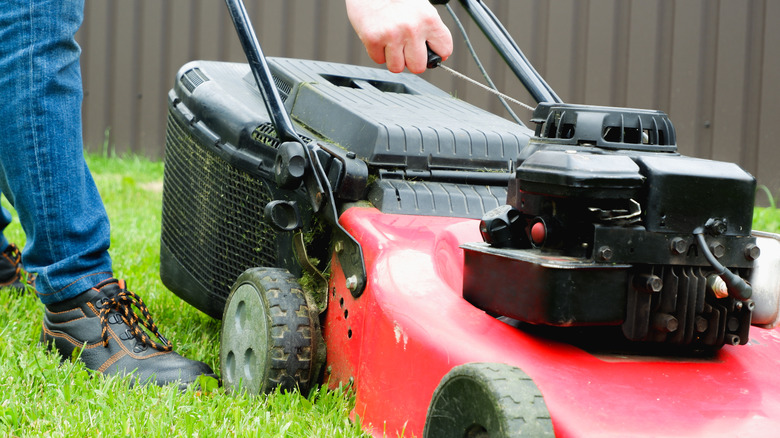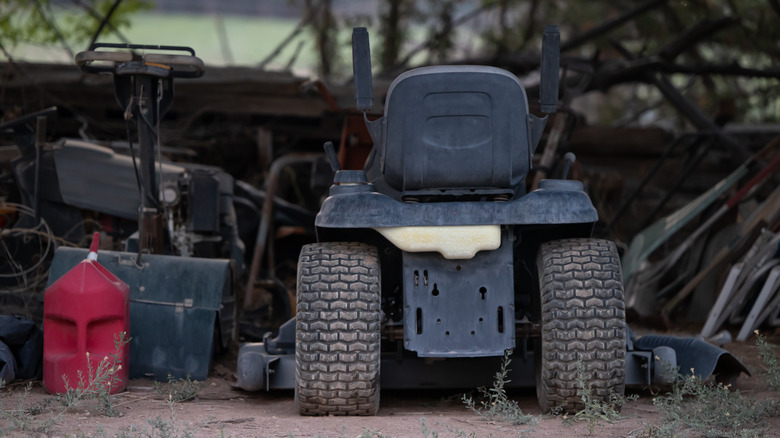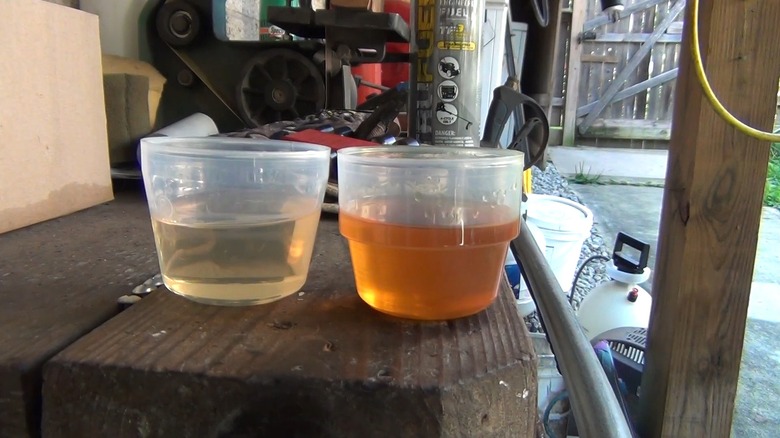What Happens If You Use Old Gas In A Lawn Mower?
Unfortunately, gasoline has a finite shelf life, becoming "old," within a matter of only a month in some cases. If the gas in your mower is stale, the machine will be difficult to start, won't run smoothly, and this is just the beginning of your problems if you're not using fresh fuel. In more dire situations, stale gas can end up clogging the fuel system, cause issues in the carburetor, and even accelerate the development of rust. In fact, decayed fuel is considered one of the leading factors for mowing equipment failure.
With the average lawn mower repair between $75 and $550, according to Lawn Starter, not only is broken mower inconvenient, but it can be costly to fix as well. Of course, fuel shouldn't be your only concern when working to keep your equipment in good shape. How often you should be changing your lawn mower's air filter is another important consideration. Now you know what stale fuel can do to your lawn equipment, but you may be wondering why gas gets "old," and how to recognize gas that's well past its prime. There are a few main culprits that cause fuel to age, and fortunately, a few simple methods to determine if its stale.
Oxidation, evaporation, and moisture
Gasoline is made up of around 150 variations of hydrocarbons, which allow it to serve multiple purposes within an engine. From combustion and lubrication, to combatting rust and ice, fuel works for an engine on many fronts, but only for a limited time. As fuel sits in your mower, it begins to oxidize, which is a chemical reaction that changes gasolines consistency. Basically, a filmy layer develops over the aging combustion material, which can cause blockages in various parts of the fuel system, in addition to reducing its burning potency.
Another factor that contributes to gasolines decline, is the fact that not all of those approximately 150 different hydrocarbons evaporate at the same rate. One of the more caustic ingredients of fuel (which are the lightest hydrocarbons), evaporate more rapidly. Trouble is, these same hydrocarbons are the ones primarily responsible for getting the engine started. One of the strangest facts about fuel, is that although it expires relatively quickly, the process of making gasoline requires a lengthy journey from crude to unleaded.
The final enemy working to age your fuel is moisture. Gas that contains ethanol, which tends to draw in water, is particularly susceptible. The danger with inviting moisture into your fuel is that it can cause rust to form, creating all sorts of issues which degrade performance and reduce the health of your lawn mower engine.
So, how do you know if the gas is too old?
There are a few tips that can help you identify whether the gas in your lawn mower is good or if it needs to be drained out and replaced. The easiest sign your gas is expired, is simply how much time it's been sitting in the tank. For example, if you left fuel in your mower over the winter, and it's now spring, the fuel has gone bad and needs changing out. Always drain out the fuel before storing your mower for the colder months and here's how to properly dispose of gasoline.
Another way to identify stale gas is by its smell. Oxidation, which is one of the causes of expired fuel, creates an awful smell. Essentially, remove the cap on the mowers fuel tank and take a brief whiff of the odor coming out. If it still smells like gas, it's good, if it emits an odd stench, it's gone bad and needs to be drained.
Lastly, you can also perform a visual inspection of the gas in your mower. This method requires that you siphon a small amount of the mower's fuel into an appropriate container. Once you have a sample of the gas, check its color. If its good, the color should be a lighter shade and fuel should be more transparent. If, however, the fuel is a darker brown, is cloudy, or you notice visible particles floating in it, replace it with fresh gas.


